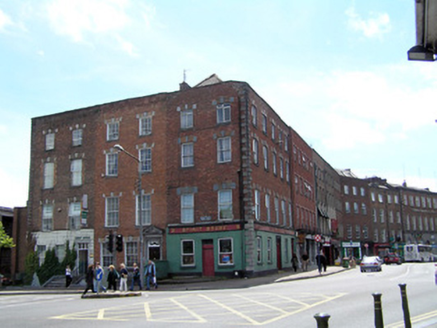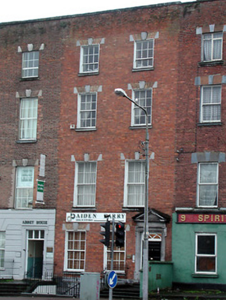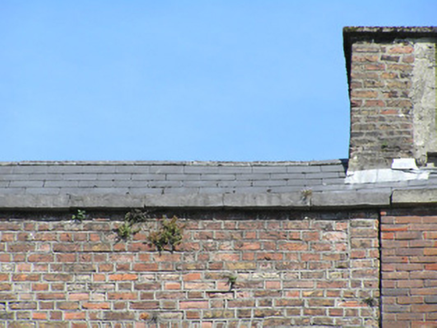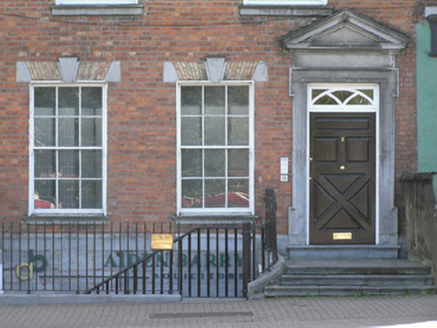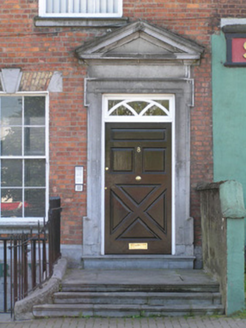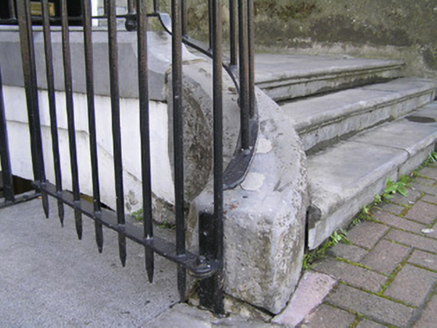Survey Data
Reg No
21513011
Rating
Regional
Categories of Special Interest
Architectural, Artistic
Original Use
House
In Use As
Office
Date
1790 - 1760
Coordinates
157854, 157371
Date Recorded
15/07/2005
Date Updated
--/--/--
Description
Terraced two-bay four-storey over concealed basement red brick building, built c. 1775, forming one of a terrace of three houses of similar design and patronage, with a fine limestone doorcase and railed front site basement area. Pitched artificial slate roof hidden behind parapet wall and red brick chimneystack to west party wall. Red brick walls laid in Flemish bond, with limestone coping to parapet wall. Original squared and coursed limestone basement elevation terminating at ground floor level with a smooth limestone ashlar plinth course. Square-headed window openings, with fine rubbed red brick flat arches with limestone ashlar end blocks and stepped keystones, rendered reveals and profiled limestone sills. Mid nineteenth-century replacement three-over-six and six-over-six timber sash windows with ogee horns. Original square-headed door opening enriched by limestone ashlar lugged and kneed limestone architrave doorcase with triangular pediment above, having a limestone threshold step with nosed detail; original distinctive raised and fielded panelled timber door leaf and arced glazing bars to overlight. Opening onto limestone front door platform with nosed limestone steps, bridging the front site basement area from which it is enclosed by a limestone plinth wall and replacement wrought-iron railings splaying on a curve before running parallel to the façade. Modern steps accessing front site basement area.
Appraisal
A fine Georgian terraced building forming one of a terrace of three houses (originally seven terraced houses prior to c. 1960s demolition of four to the east) occupying one of the most prominent sites in this part of the city. The architectural value and importance of this building is further enhanced by the surviving limestone doorcase, door leaf and overlight. Bank Place was laid out and constructed by Philip Roche, who also laid out Rutland Street and was surely conceived as a staggering grandiose gateway to the Georgian new town from the predominantly medieval English Town. Architectural concurrencies are evident to both streetscapes, principally in the proportions of the houses and the surviving lugged and kneed doorcase architraves. It is an exemplar, in terms of condition and intactness, while remaining a thoroughly commercially viable modern office.
